As the first international break becomes a distant memory, teams in the Premier League refine their focus, aiming for a strong position going into the Christmas schedule. West Ham continued their impressive progress with a solid home win against a floundering Man United side. Without a penalty in sight, the visitors struggled to a disappointing 2-0 defeat, once again leaving the Olympic Stadium with nothing.
In this tactical analysis, we look at how both side’s tactics made for a cagey, hard-fought match. The analysis will show how the Hammers won the game comfortably despite an xG of just 0.71.
Line Ups
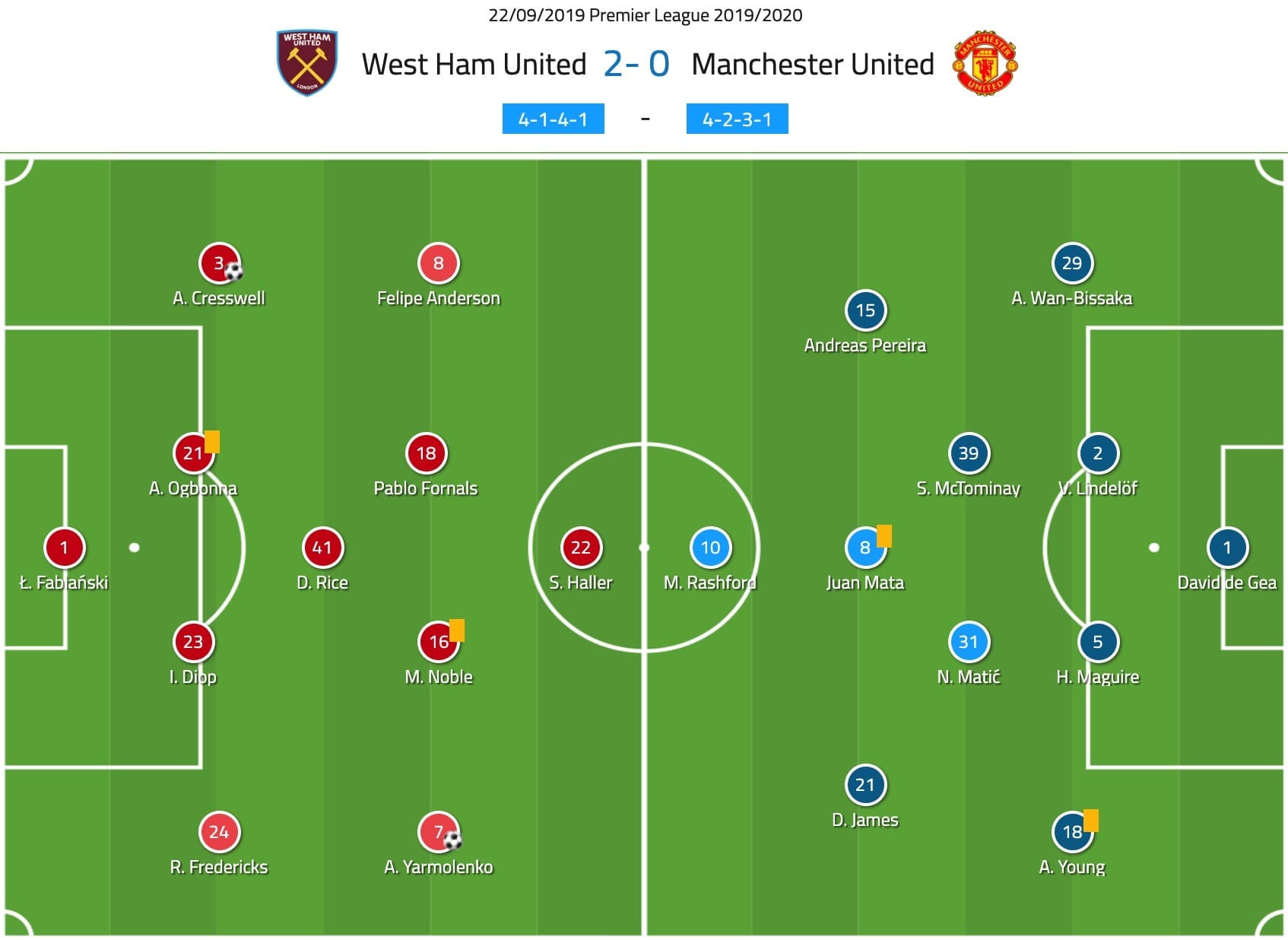
West Ham lined up in a 4-1-4-1 system, with Declan Rice deployed as the holding midfielder, positioned in front of the back four. Forced changes for Manuel Pellegrini saw Aaron Cresswell – whose sumptuous free-kick doubled the host’s lead – replace the suspended Arthur Masuaku. Pablo Fornals started in midfield alongside Mark Noble, in place of the injured Manuel Lanzini. Issa Diop and Angelo Ogbonna continued to impress as the centre-back pairing; their physical presence bullied Man United’s forwards, not just in aerial duels but 1v1 duels too.
Ole Gunnar Solskjær stuck with the same team that narrowly beat Leicester last week. The visitors continued to rely on youth, registering the lowest average age of any starting 11 in this year’s Premier League campaign – 25 years and 123 days. Marcus Rashford started upfront as the lone striker but become isolated and dragged too deep by Man United’s passive approach to the game. This had a knock-on effect on Juan Mata who also struggled to imprint anything on the game, he was often forced into wider areas due to the lack of central space afforded to him.
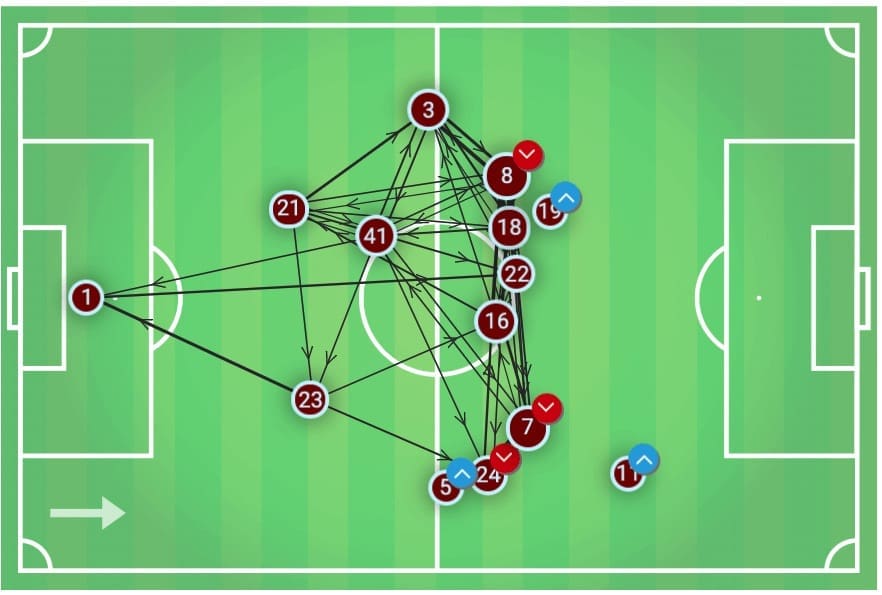
As mentioned, West Ham opted for a 4-1-4-1 shape, which was asymmetrical in operation. On the right-hand side, Ryan Fredericks supported his winger, Andriy Yarmalenko, by overlapping as the attacks developed down the right-hand side. This offered the Ukranian support and also more time on the ball as the defenders passed on their man to cover the overlapping runs.
The left offered a slightly different dynamic, as you can see above. Felipe Anderson came off the left flank and linked attacks more centrally, using Sébastien Haller and Fornals as support. This created space on the left flank for Cresswell, who was able to put in four crosses as a result.
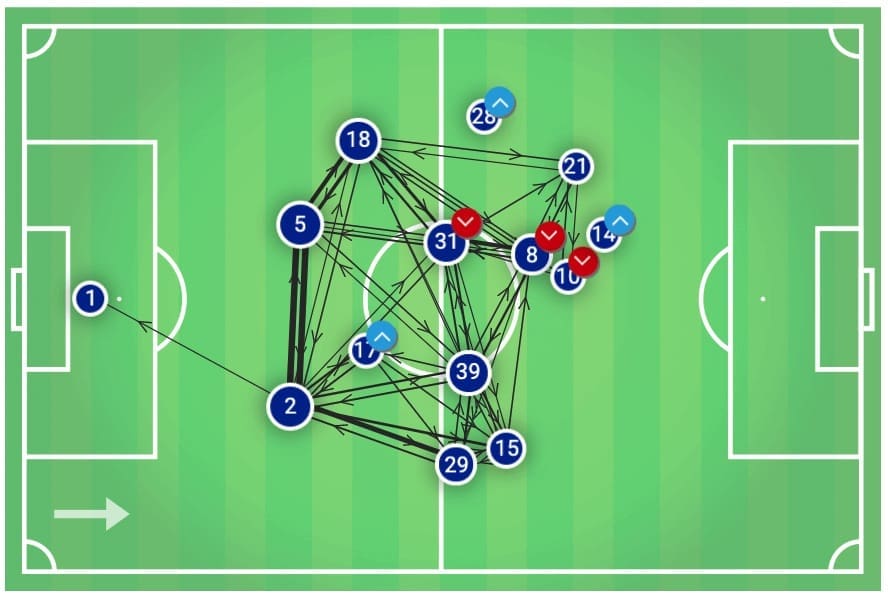
Man United’s pass map shows a higher frequency of passing around the back four. The Red Devil’s edged possession, albeit marginally (53%), however as you can see most of it was in their slow ball rotations across the defensive line. The pass map also highlights Rashford’s isolation, as United struggled to play through the defensive unit installed by West Ham, as we look at below.
Defensive order triumphs over fluid creativity
West Ham and Man United entered the match with very similar gameplans, just with different formations to implement their ideas. This lead to a very tentative, scrappy match that lacked football of high technical quality. Both sides only achieved an average pass per possession of just 3.93 and 4.87 respectively.
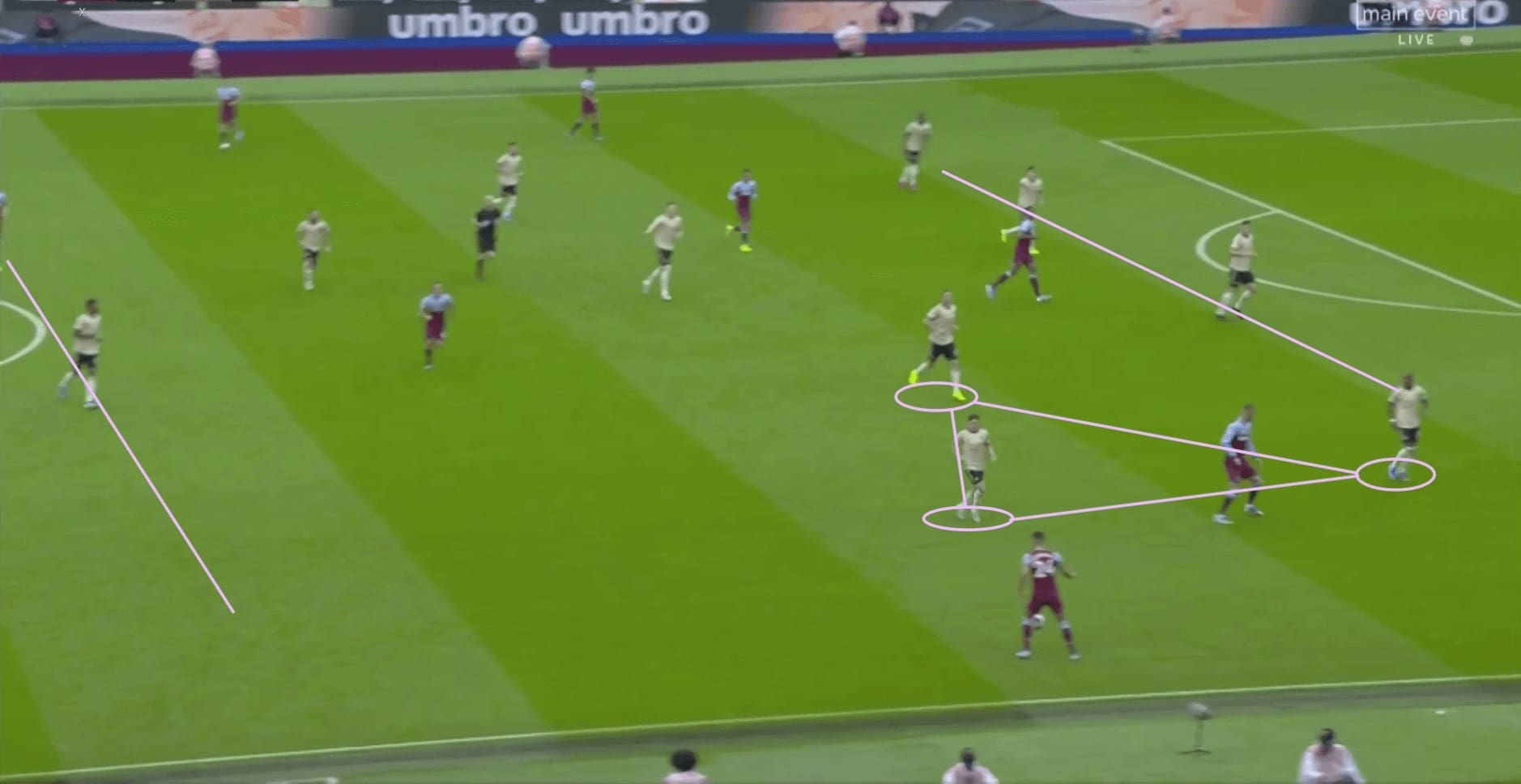
Out of possession Man United defended deep, their PPDA was 10.67, which is their lowest level of defensive aggression shown this season. The midfield double pivot of Scott McTominay and Nemanja Matić set themselves in position, protecting their centre-backs by closing the vertical spaces between the lines.
As West Ham’s build-up play developed down either wing, the respective central midfielder moved out to support the full-back and winger to ensure a 3v2 scenario was in place. This stability prevented West Ham from creating freely, as they only registered their first shot on goal in the 20th minute.
Man United’s passiveness in defence was eventually their downfall, however, as they failed to close down a move developing on the edge of their box which was finely finished off by Yarmelenko.
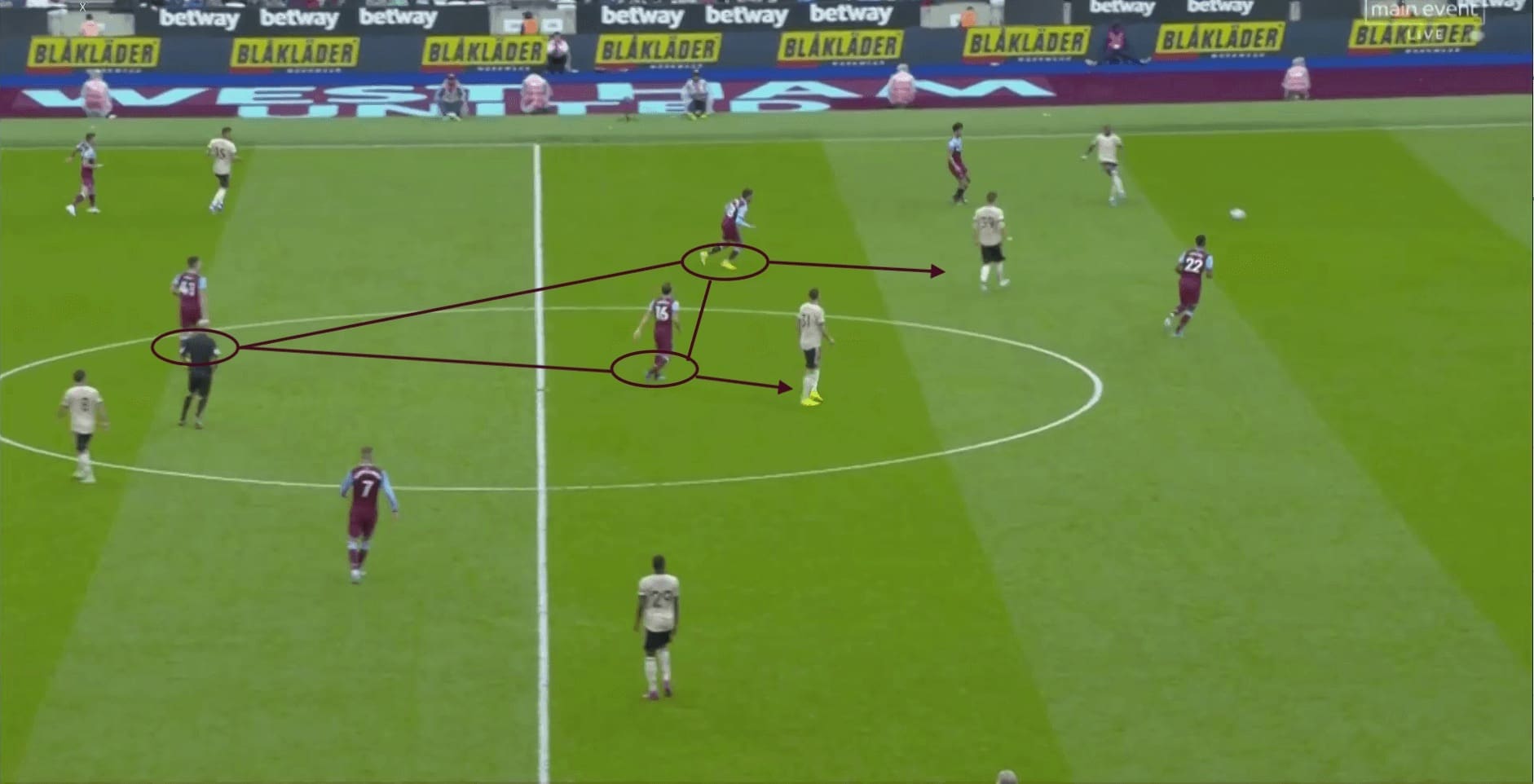
West Ham were by no means aggressive in pressing, but they came with a plan to neutralise their opponents. Their PPDA was 8.57 as they implemented a bespoke man-to-man press which centred around Man United’s build-up techniques.
As you can see above, when Man United were building up from the back, West Ham’s midfield two – hinged by Rice – pressed up onto Man United’s double pivot. Their intention was not to steal the ball in high areas of the pitch but to suffocate the opposition defenders into making low percentage forward passes.
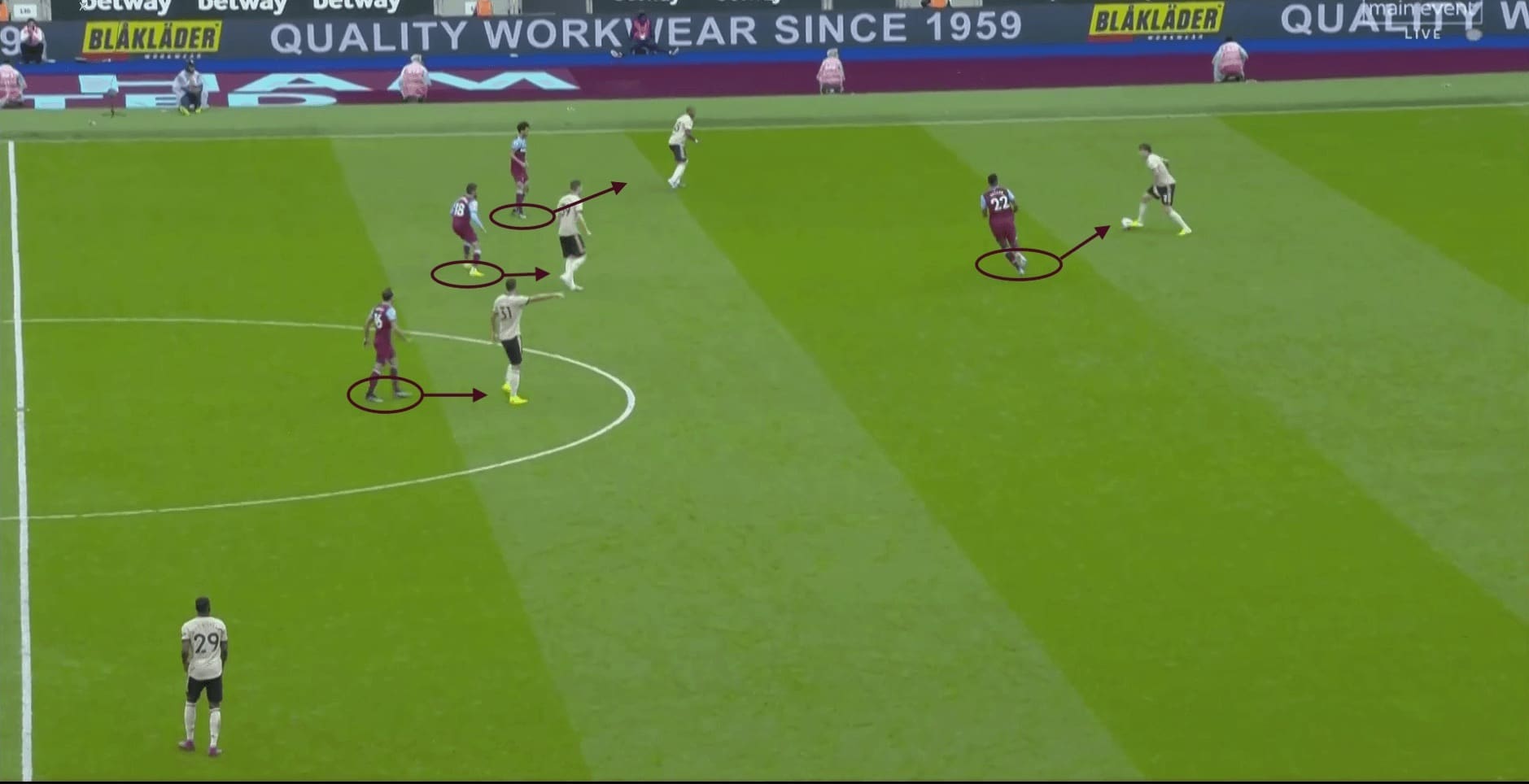
Victor Lindelöf and Harry Maguire were often reduced to long hopeful balls forward, which were easily intercepted by the physical West Ham defenders, who won 62% of their aerial duels. Lindelöf ended the match with a long pass success rate of just 14%.
As a result, the visitors were stifled. Their lack of movement up front, compounded with their absence of natural technical ability in the middle of the park, resulting in an unimaginative, disappointing attacking display.
The visitors were reduced to few big chances, with their best coming from Mata who slide the ball wide after getting on the end of a dangerous cross. Other than that, Man United struggled to create freely, as we see below.
Man United’s transition woes
When a team opts to defend deep, their main threat usually comes from fast offensive transitioning. Part of Man United’s problem was their inability to create counter-attacks from their defensive positioning. In the entire match, they only countered twice, despite defending deep the entire game. Below is an example of this.
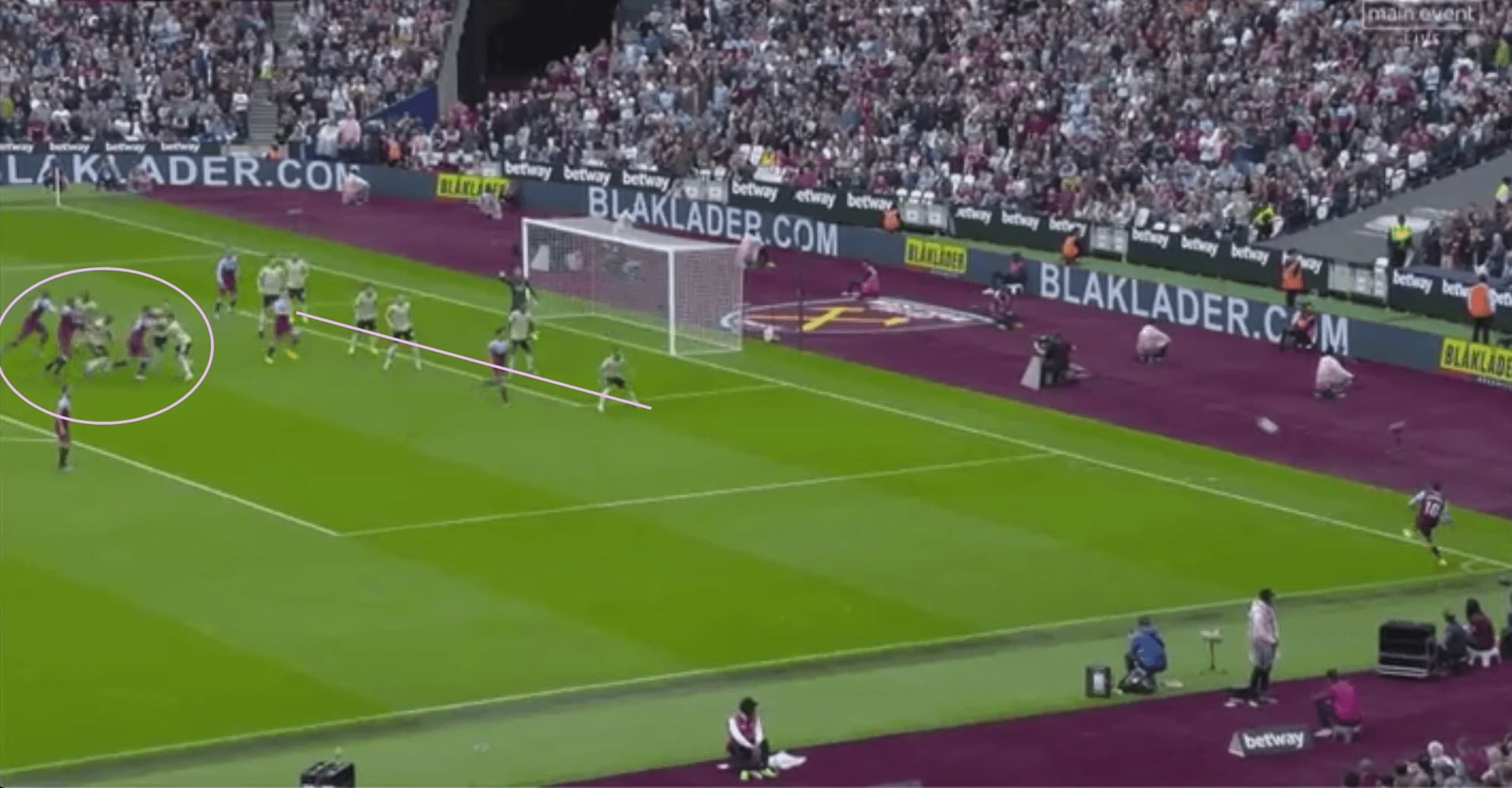
Man United set up their corner using a hybrid of man-to-man marking and zonal. You can see circled, the four blockers used to mark man-to-man. This is supported by six zonal defenders occupying individual spaces along the six-yard box. This meant Man United used all ten outfield players in defensive duties for the corner.
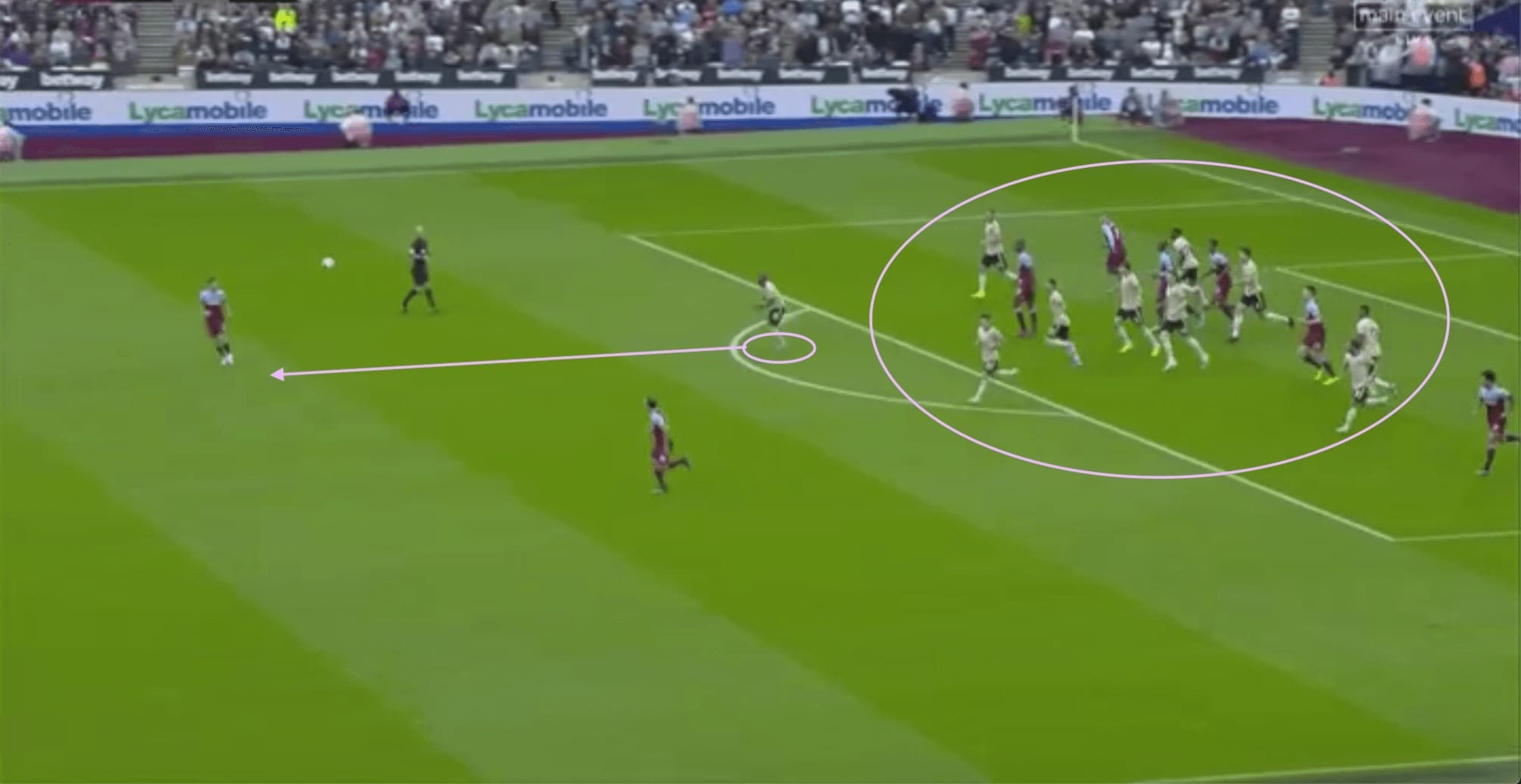
The corner is headed away by a defender as Man United now look push out their defensive line. However, instead of using this as an opportunity to spring out from in offensive transition, Man United are unable to even consider a counter because their players are too far away to challenge for the second ball.
As you can see, one Man United player pushes out towards the ball, but the space is too large to impose any pressure in an attempt to catch West Ham high up the pitch.
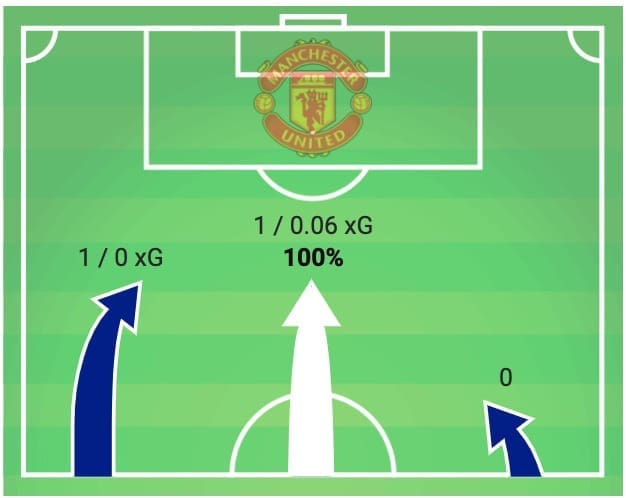
The above statistic makes for dismal reading for Man United fans who appear to have witnessed their side regress back into a passive, regressive style of play.
Conclusion
Just six games in and Man United’s season is already starting to unravel. Another defeat has once again exposed the cracks that were attempted to be filled with big summer acquisitions. Their build-up play has regressed to a place that saw three previous managers lose their jobs – slow, lethargic and unimaginative. The absence of Paul Pogba has hit the team hard and they are struggling to lay any legitimate claim for the wide-open top-four spot.
Pellegrini will be pleased with a victory he will have been quietly confident was there for the taking against this United side. His tactics were expertly implemented and the home side punished their opponent’s sloppiness. West Ham now, for the first time in a long while, have a real belief backed up by a talented squad, to finish high up the table and push to have their name put in the European hat.

If you love tactical analysis, then you’ll love the digital magazines from totalfootballanalysis.com – a guaranteed 100+ pages of pure tactical analysis covering topics from the Premier League, Serie A, La Liga, Bundesliga and many, many more. Buy your copy of the August issue for just ₤4.99 here





Comments